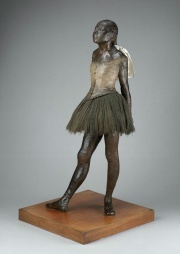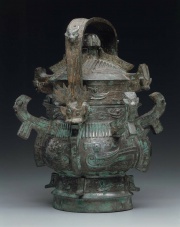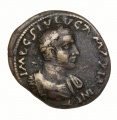Difference between revisions of "Bronze"
JLBoutaine (talk | contribs) |
m (Text replace - "== Authority ==" to "== Sources Checked for Data in Record ==") |
||
| Line 27: | Line 27: | ||
| − | == | + | == Sources Checked for Data in Record == |
* D. Bourgarit, J. Bassett, F.G. Bewer, G. Bresc-Bautier, P. Malgouyres & G. Scherf, French Bronze Sculpture - Materials & Techniques 16th-18th Century - Bronzes français - Matériaux et techniques de la sculpture en bronze du XVIe au XVIIIe siècle, Archetype Publications - London (2014) | * D. Bourgarit, J. Bassett, F.G. Bewer, G. Bresc-Bautier, P. Malgouyres & G. Scherf, French Bronze Sculpture - Materials & Techniques 16th-18th Century - Bronzes français - Matériaux et techniques de la sculpture en bronze du XVIe au XVIIIe siècle, Archetype Publications - London (2014) | ||
Revision as of 14:15, 29 April 2016
Description
An alloy of Copper and Tin sometimes containing small amounts of Zinc, Lead, Silver, Aluminum, or Phosphorus. Bronze artifacts have been discovered in Thailand dating from 3600 BCE, while Chinese and Middle Eastern bronzes have been dated as early as 2000 BCE. Bronze is stronger, harder, and more durable than Brass or Iron. It was used for weapons, tools, vases, household goods, coinage, jewelry, and cast sculptures. US standard bronze is composed of 90% copper, 7% tin and 3% zinc. Ancient bronze alloys sometimes contained up to 14% tin. Bronzes are usually a yellowish gold in color unless the copper concentrations are greater than 95% then they tend to be reddish. Bronzes with high tin concentrations (20-25%) are hard, brittle, and steel-colored.
See also Art bronze, and Gold bronze.
Synonyms and Related Terms
lattin; maslin; tang (Chin.); brons (Ned., Sven.); bronze (Fr., Port.); Bronze (Deut.); bronzo (It.); bronce (Esp.)
Hazards and Safety
May contains small amounts of lead. Skin contact may cause allergic reactions in some people.
Additional Information
D.A.Scott, Copper and Bronze in Art: Corrosion, Colorants, Conservation, Getty Publications, Los Angeles, 2002.
Additional Images
Sources Checked for Data in Record
- D. Bourgarit, J. Bassett, F.G. Bewer, G. Bresc-Bautier, P. Malgouyres & G. Scherf, French Bronze Sculpture - Materials & Techniques 16th-18th Century - Bronzes français - Matériaux et techniques de la sculpture en bronze du XVIe au XVIIIe siècle, Archetype Publications - London (2014)
- G.S.Brady, Materials Handbook, McGraw-Hill Book Co., New York, 1971 Comment: p. 120
- Ralph Mayer, A Dictionary of Art Terms and Techniques, Harper and Row Publishers, New York, 1969 (also 1945 printing)
- David C. Scott, Metallography and Microstructure of Ancient and Historic Metals, The Getty Conservation Institute, Los Angeles, 1991
- Jack Odgen, Jewellery of the Ancient World, Rizzoli International Publications Inc., New York City, 1982
- Dictionary of Building Preservation, Ward Bucher, ed., John Wiley & Sons, Inc., New York City, 1996
- Michael McCann, Artist Beware, Watson-Guptill Publications, New York City, 1979
- Random House, Webster's Encyclopedic Unabridged Dictionary of the English Language, Grammercy Book, New York, 1997
- The American Heritage Dictionary or Encarta, via Microsoft Bookshelf 98, Microsoft Corp., 1998
- Tom Rowland, Noel Riley, A-Z Guide to Cleaning, Conserving and Repairing Antiques, Constable and Co., Ltd., London, 1981
- George Savage, Art and Antique Restorer's Handbook, Rockliff Publishing Corp, London, 1954
- Wikipedia, the free encyclopedia, at http://www.wikipedia.com Comment: Bronze


